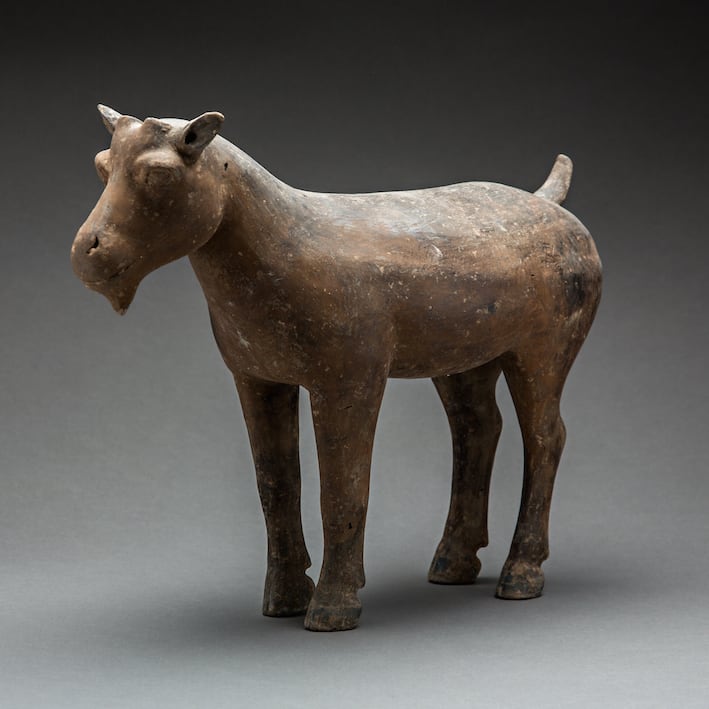Pair of Han Terracotta Goat Sculptures, 206 BCE - 220 CE
Terracotta
29.8 x 39.1 cm
11 3/4 x 15 3/8 in
11 3/4 x 15 3/8 in
X.0413
Further images
During the Han Dynasty, sculptural effigies of domesticated animals were often interred in the tombs of nobility and elite members of the social hierarchy. Primarily fashioned from terracotta, these sculptures...
During the Han Dynasty, sculptural effigies of domesticated animals were often interred in the tombs of nobility and elite members of the social hierarchy. Primarily fashioned from terracotta, these sculptures accompanied the spirit of the deceased into the afterlife. Beasts of burden and animals reared for food were both interred to provide for the needs of the deceased. This incredibly naturalistic pair of goats would originally have been arranged in a pen or enclosure with other domesticated animals. The modelling is simple but exquisite with each goat featuring a small beard, upright tail and pointed ears. Between the ears are two small holes designed to support a pair of horns probably fashioned from a perishable material such as wood. The eye-sockets are raised and the nostrils are formed from two curved indentations. The surface has been painted with a brown pigment with slightly darker areas around the hooves. The head of the one of the pair is tilted slightly to the viewer’s left. Today, we are drawn to these sculptures as beautiful works of art. However, they also reflect the religious and philosophical beliefs of the ancient Chinese and are therefore of tremendous cultural and historical significance.





